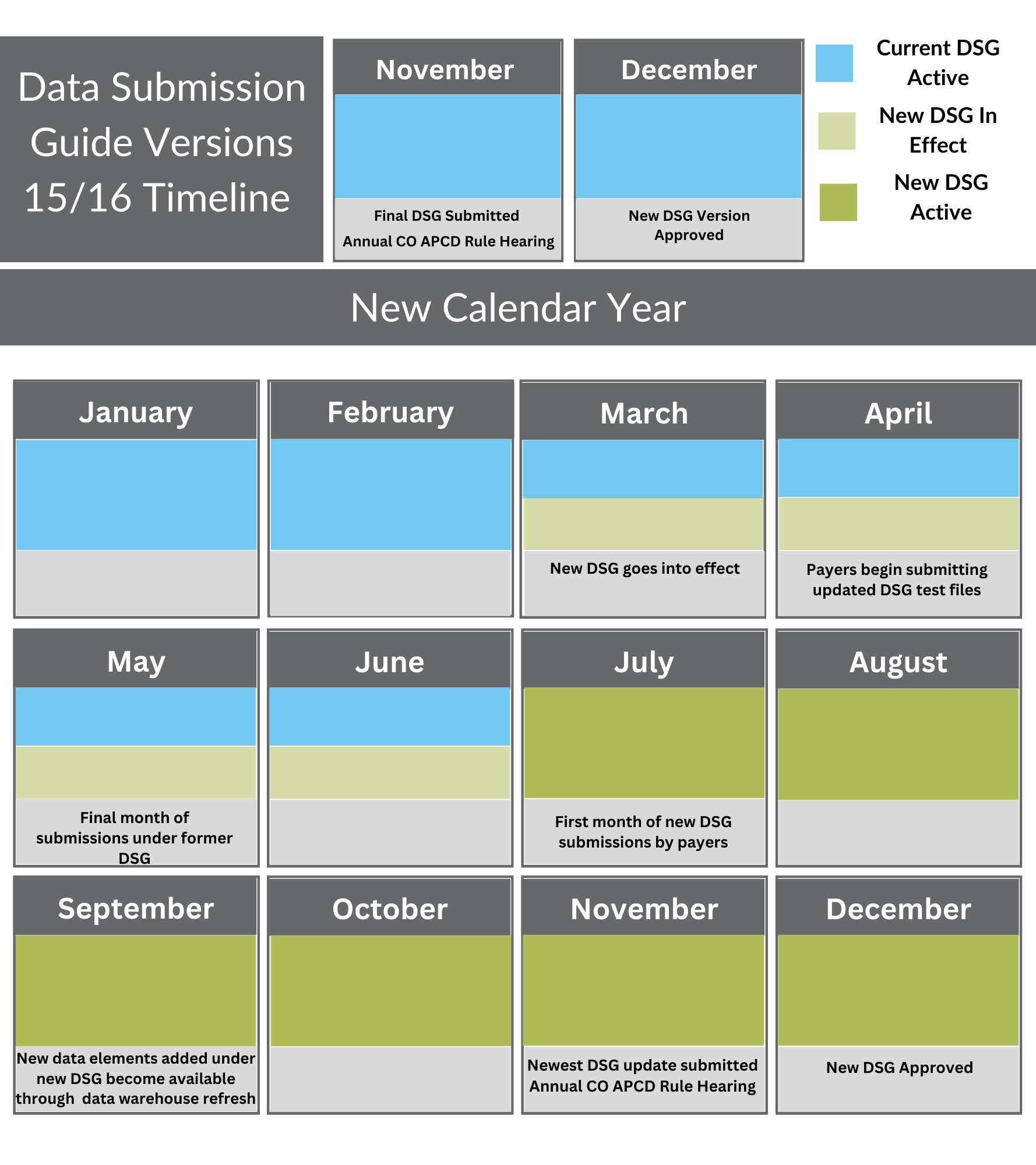As administrator of the Colorado All Payer Claims Database (CO APCD), CIVHC is required by statute not only to maintain the database, but to continually improve the quality and utility of the CO APCD. One of the most essential activities to enhancing the CO APCD is annually updating the CO APCD Rule and Data Submission Guide (DSG) in collaboration with the Department of Health Care Policy and Financing (HCPF) and health insurance payers across the state.
Payers use the DSG as a guide to understand what data must be submitted and in what format. Annual updates to the DSG follow the HCPF Executive Rule Change Process and allow CIVHC to propose new data submission requirements to ensure the CO APCD is as robust, comprehensive, accurate, and usable as possible to provide the most benefit to Colorado and advance the mission of the CO APCD.
What Changes Are Made When Updating the DSG?
CIVHC begins working with partners far in advance of submission of annual updates to the DSG to ensure the process is as collaborative as possible. Early in the process, CIVHC will work with HCPF to identify suggested changes. There are several reasons why new data elements may be proposed, including:
- New data elements necessary to increase the CO APCD’s ability to support and inform efforts to improve health care and/or support implementation of legislation
- Changes need to be made to existing data fields to clarify the specifications and requirements, or standardize the way payers are pulling the data from their systems
- New elements or adjustments are needed to more closely align with the Common Data Layout (CDL) being used by APCDs throughout the nation
DSG Update Timeline
Each DSG update and Rule Change cycle takes place over a year. Updates to the DSG go into effect each March. Immediately after, CIVHC begins work to determine the updates needed for the next round of the DSG and begins meeting extensively with payers to ensure they have no major concerns or revisions. CIVHC presents the final proposed changes to HCPF in November of each year, after multiple drafts, payer feedback calls, comment periods, and public review meetings. Approval through the Rule Change Meeting takes place in early December each year.

After a new version of the DSG goes into effect in March, the previous DSG remains active until May, with payers having a 120-day grace period from the effective date to prepare their systems and submit test files before formal collection of files begins in July. For information on the current version of the DSG, visit our “Submitter Resources” page.
Submission Validation
Payers submit medical, professional, pharmacy, and dental claims each month, basing their submission files on the most current DSG. CIVHC works closely with payers to ensure they understand the submission requirements and that the process is as smooth as possible.
Files are securely submitted to CIVHC Data Warehouse managers, where they are run through an automated validation process. The claim files must pass validation, following all instructions in the current DSG, to move into more extensive quality checks. Seemingly minor errors, like incorrect file names, can cause claims to fail validation.
The submission portal lets submitters know when claims are received and when validation begins, which usually happens within minutes but can take up to 24 hours. Currently, there is a library of over 300 validation tests performed on new submissions to the CO APCD.
Upon completion of validation, submitters are notified as to whether there are issues with their submission or if the claims passed the tests. Detailed information about any submission issues is available in the online portal so submitters can investigate the results of the validation and make any necessary adjustments prior to resubmitting the data. Only once the initial submission validation is completed can the claims move to the more extensive quality checks and be processed in the Data Warehouse.